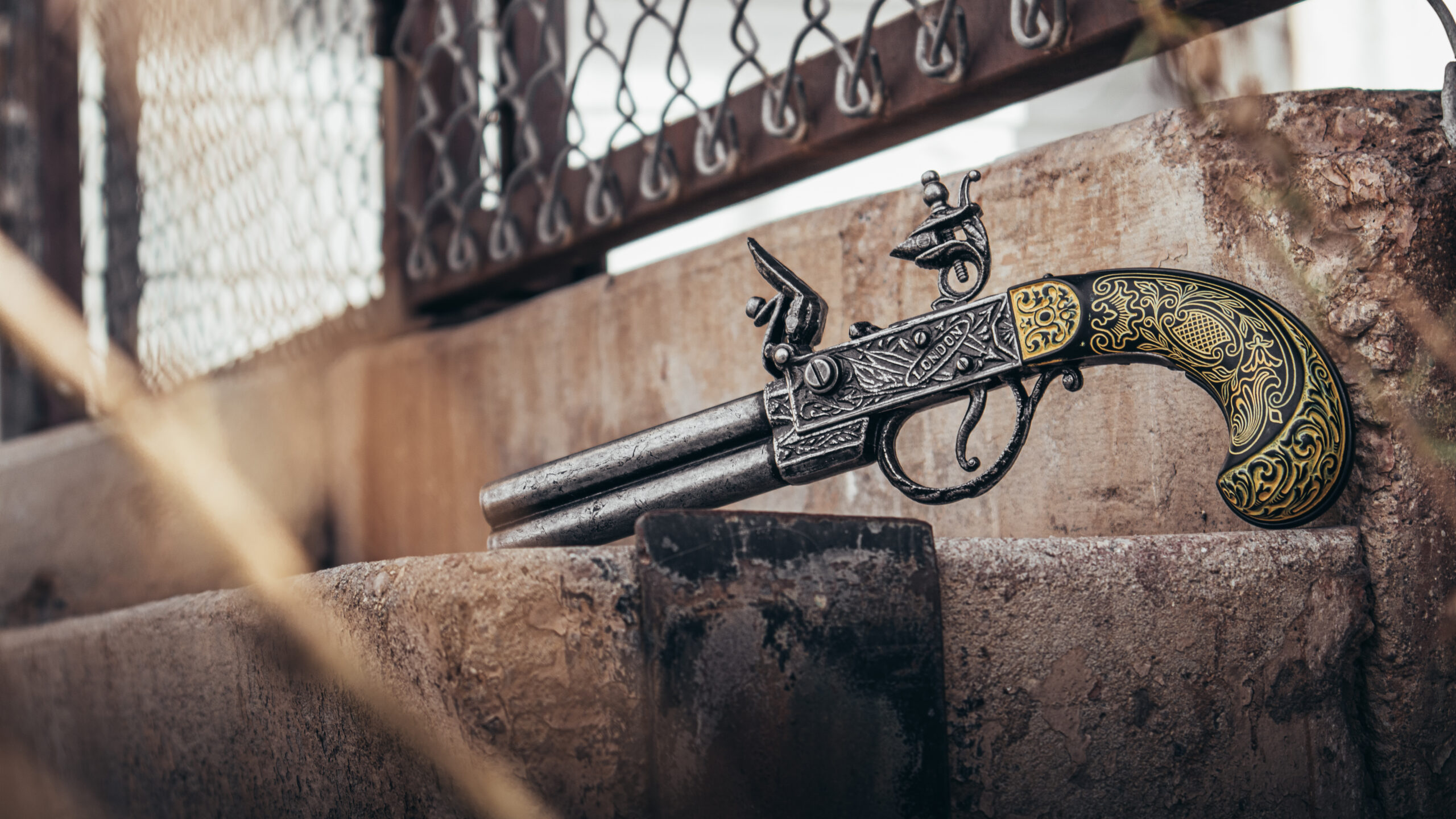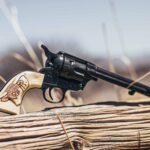The flintlock pistol is a firearm that uses a flintlock mechanism to ignite the gunpowder and fire a projectile. It marked a significant advancement in firearm technology compared to earlier ignition systems like matchlock and wheellock mechanisms. The flintlock mechanism for firearms was first introduced and began to gain popularity in the early 17th century. It replaced earlier ignition systems like the matchlock and wheellock, offering several advantages, including greater reliability and quicker ignition.
One of the earliest known examples of a flintlock pistol is the “Duckfoot” pistol, which dates back to the late 16th century. The Duckfoot pistol was unique because it had multiple barrels arranged in a fan-like pattern, which allowed the shooter to fire multiple shots simultaneously. This design was primarily used for self-defense at close quarters and was not a precision firearm.
Flintlock mechanisms continued to evolve and improve throughout the 17th century. By the early 18th century, flintlock pistols had become standard military and civilian sidearms in many parts of the world. They were widely used by soldiers, pirates, and civilians for self-defense and as weapons of personal protection.
Flintlock pistols remained used well into the 19th century, even as newer ignition systems, such as percussion caps and cartridge-based ammunition, were developed. They were popular due to their reliability, relative ease of use, and effectiveness in combat. Flintlock pistols played a significant role in various historical events, including the American Revolutionary War and the Napoleonic Wars. So, while the concept of firearms with flintlock mechanisms dates back to the late 16th century, their widespread use and development as practical weapons occurred during the 17th and 18th centuries.
Decline in Popularity
The decline of the flintlock mechanism began in the early 19th century with the introduction of percussion cap technology. Percussion caps were more reliable and eliminated the need for loose powder in the flash pan, simplifying ignition. They also allowed for metallic cartridges, which revolutionized firearms design and ammunition.
Revolvers and Breech Loading Firearms
The development of firearms like the Colt revolver and breech-loading rifles further diminished the popularity of flintlock pistols and muskets. These newer designs offered faster reloading and increased firepower, making flintlocks obsolete for military and civilian use.
Industrialization and Standardization
The 19th century saw significant advancements in firearms manufacturing, leading to greater standardization and mass production. The flintlock’s complexity and the need for skilled gunsmiths to produce and maintain them became a disadvantage in the face of more modern and easily produced firearms.
The History of Flintlocks is Fascinating
The flintlock mechanism was introduced in the early 17th century and gained popularity due to its reliability and improved ignition compared to earlier firearm mechanisms. However, it eventually lost popularity in the 19th century due to advancements in ignition technology, the development of more efficient firearms, and the standardization of manufacturing processes.





